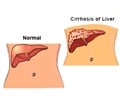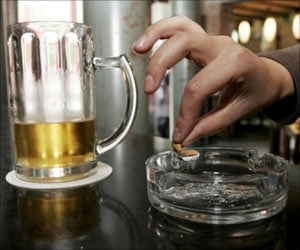Two in three underage college students use false IDs to overcome minimum legal drinking age laws and obtain alcohol.

"Alcohol use is extremely prevalent among underage youth in the United States – despite MLDA laws – and poses health and safety risks," said Amelia M. Arria, associate professor of behavioral and community health and director of the Center on Young Adult Health and Development at the University of Maryland School of Public Health, as well as corresponding author for the study. "Alcohol is easy for most youth to obtain, and false IDs comprise one of the factors contributing to alcohol's easy accessibility."
Arria added that false ID use seems to be related to high-risk drinking in at least two major ways. "First, heavy drinkers tend to be more likely to obtain and use a false ID," she said. "Second, false ID use appears to contribute to further increases in how much and how often a student drinks. In our sample, we found a clear pathway from more frequent false ID use to more frequent drinking, which led to greater risk for developing alcohol dependence, even after adjusting for several risk factors for AUDs. Thus, we believe false ID use contributes to high-risk drinking patterns because it increases the accessibility of alcohol and makes it easier for students to drink more frequently." This study is the first to examine the association between false ID use and subsequent risk for developing AUDs.
Arria and her colleagues recruited 1,015 college students (529 females, 486 males) – who had drank alcohol at least once in their lives by their first year in college – for annual assessments during their first four years of college. In addition to questions about the use of false IDs, researchers also examined several other factors that might increase risk for an AUD, such as: demographics (sex, race, living situation, religiosity, socioeconomic status); individual characteristics (childhood conduct problems, sensation-seeking, age at first drink); high school behaviors (high school drinking frequency, drug use); family factors (parental monitoring, parental alcohol problems); and perception of peer drinking norms.
"First, we found that 66.1 percent of the sample used false IDs," said Arria, "and on average, we estimated that they used false IDs 24.1 percent of the times they drank before they turned 21. Second, we demonstrated that false ID use led to increases in drinking frequency and quantity. Third, we showed that while false ID use wasn't directly related to AUD risk; it indirectly predicted increases in AUD risk over time through its contribution to increases in drinking frequency. Lastly, the study identified several predictors of false ID use frequency, such as younger age at first drink of alcohol, greater levels of alcohol and drug involvement during high school, higher levels of sensation-seeking, Greek life involvement, and living off-campus."
"I think some of the most important findings to come out of this study have to do with how widespread this problem is," said Jennifer Read, an associate professor in the department of psychology at the State University of New York at Buffalo. "I was surprised that almost two-thirds of the students used false IDs. It will be interesting to see if this reflects something specific to this university or region in Dr. Arria's study, or if the use of false IDs is this ubiquitous across campuses in the U.S."
Advertisement
Regardless the status of college attendance, Arria added, interventions targeted at youth and policies that enforce sanctions against false ID use are needed. "Reducing the use of false IDs needs to be a priority for policy makers in order to help reduce excessive drinking among college students," she said. "Other research has suggested that effective measures include heightened enforcement of sanctions against individuals who manufacture and sell false IDs; confiscation of false IDs by alcohol retailers, bars, and clubs; and the use of ID checking machines in establishments that are restricted to persons who are of legal drinking age. Sanctions for individuals caught using false IDs could include their confiscation, fines, and citations. Most importantly, high-risk drinkers should be directed toward effective interventions that can help them change their behavior. Ultimately, this will promote their health, safety and long-term success."
Advertisement
"Just knowing how common the use of false IDs is suggests that this, among other things, is something that parents should be monitoring and also talking with their kids about," said Read. "Both parental monitoring and communication have been shown to buffer against problem drinking outcomes in young adults, and this is another area where parents might be encouraged to engage in these practices."
"It is important to note that heavier drinking patterns seem to be both a predictor and an outcome of false ID use," said Arria. "In other words, false ID use might be 'adding fuel to the fire' among students who are already high-risk drinkers. An additional finding is that increases in AUD risk over time were explained by increases in alcohol frequency but not by increases in alcohol quantity. This is important for researchers because it emphasizes that frequency and quantity are unique, distinct dimensions of drinking, and that they contribute to AUDs in unique, distinct ways."
"One of the big implications I see of this work pertains to drunk driving," added Read. "As the authors note in their discussion, in all likelihood, this underage drinking likely is taking place in bars, clubs, etc. "While in some cases these underage drinkers have a designated driver or are taking public transportation, it's probably reasonable to assume that many others are not. In future research, it will be interesting to look at the extent to which the use of false IDs is linked to driving under the influence."
Source-Eurekalert















